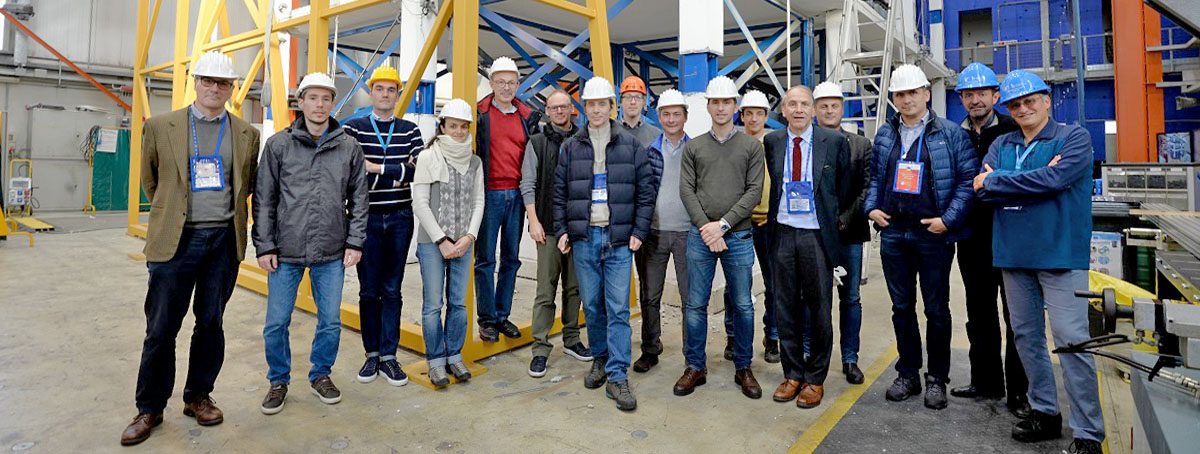The SlabSTRESS Transnational Access project was successfully completed at the ELSA Reaction Wall. The team of users comprised 14 researchers from Politecnico di Milano (Italy), École polytechnique fédérale de Lausanne (Switzerland), Universitatea Tehnica de Constructii Bucuresti (Romania) and Universidade NOVA de Lisboa (Portugal).
The test specimen was a full-scale two-storey reinforced concrete flat-slab structure with plan dimensions 9×14 m. The testing programme included pseudodynamic tests (hybrid simulation of the physical specimen and numerical shear walls) with input corresponding to the Serviceability and Ultimate Limit States and quasi-static tests under imposed cyclic displacement with increasing amplitude (three slab-column joints were strengthened after the first cyclic test).
The project provided new knowledge on the response of flat-slab structures that could not be captured in previous tests on column-slab sub-assemblies. The results will help calibrate models, verify the Eurocode and Model Code models for punching shear, develop new rules for the deformation-based design and detailing of flat-slab structures subjected to earthquake and gravity loads, and improve the design of flat-slab frames as primary seismic structures.
19 research groups from 13 countries participate in the ongoing blind prediction competition.
Visit www.slabstress.org and follow www.researchgate.net/project/SlabSTRESS for updates.




